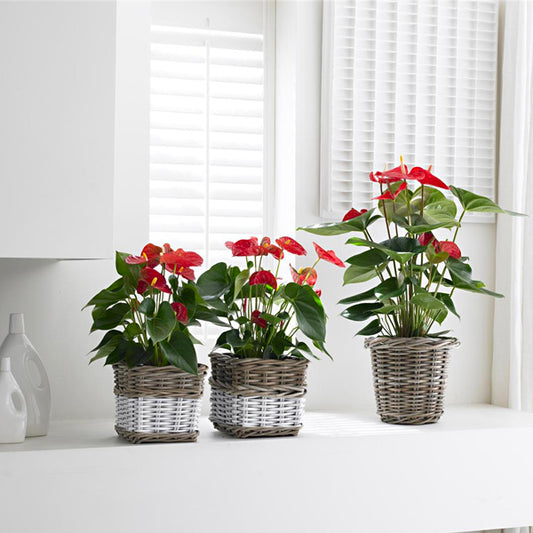5 top factors to be considered to grow orchids
There is no doubt that orchid hobbyists love their orchids by taking care of them carefully. However, the orchid growers usually make some mistakes in the learning process which can be disastrous and can even kill off precious orchids. Here are the most 5 important factors to consider while growing orchids.
Light
Light is a critical factor for orchids, too much light will burn the leaves and less light will prevent the plant from flowering. Orchids are shade-loving plants, they will enjoy filtered indirect light. it’s best to place them in a south or east-facing window or balcony which provides your orchid with the right amount of sunlight. You can observe its leaf colour to determine whether the plant is getting a sufficient amount of light. If the leaves are apple green in colour, the plant is getting sufficient light. If the leaves are dark green, it is an indication of low light.
Light requirements for Orchids could vary for different genus or species. You can find detailed culture or orchid care for different orchid genus
Watering
Watering Orchids is often confusing for beginners. There is no magic formula as it can vary from growing area to the growing area. It is said more orchids are killed by either over-watering or under-watering than any other reason. The majority of the orchids that we grow are epiphytes, meaning that they grow naturally on trees with their roots exposed to air and light.
One mistake that beginner orchid growers often make is excessive watering. Beginners can be over-enthusiastic in terms of overwatering their plants. Every time you water, soak the potting medium thoroughly. When to water your orchids depends on a few factors, but generally, the orchids should be watered when the potting medium begins to dry out. We have an expert blog in detail on all factors you must consider while watering an orchid here:
Humidity
Why is humidity important for orchids? Orchids and in fact all plants have stomata or pores on leaves that allow the orchid or plants to breathe-absorb carbon dioxide and repel oxygen. When orchids open their stomata to breathe they lose water. Humidity compensates for the water loss when opening their stomata.
Almost all orchids appreciate high humidity, and the ideal daytime humidity for orchids is 50% to 70%. If you are living in an area that has low humidity, providing artificial humidity for your orchid is one of the most important methods to keep them healthy. Adjusting humidity could be accomplished by misting your plants from time to time, by placing a humidity tray underneath its pot and controlling the airflow into the orchid growing area.
Balance: Temperature, Light and Humidity
Finding the right balance of temperature, light and humidity is the key to successful growing of orchids. orchids are light-hungry plants (indirect sunlight) and should get 12 to 14 hours of light every day throughout the year. Natural light always comes with heat, if the light and temperature are high, and if the humidity is not maintained at 50% to 70% they have a bad effect on the plants. The plant will lose more moisture than it can absorb through its roots.
Temperature, light and humidity share close relationships with each other. In order to have a better performance in an orchid's growth, each of them has to reach a certain level so they can be balanced to create an optimal growing environment for your orchids.
Potting
Using soil to grow an orchid is a mistake made by beginners that can kill the plants, unless the orchid that you got is a ground orchid. Choose a potting material that will not decompose quickly. For us, Pine Bark has given great results and it is recommended potting-medium by American Orchid Society (AOS). This mixture allows two-three years to lapse between re-potting efforts. Coconut Husk or the mix of coconut husk and charcoal also works. But coconut husk decomposes quickly, especially at the bottom of the pot, which increases the chances of root rot and fungal/bacterial infections. We wouldn't suggest using charcoal as a potting medium unless it is mixed with coconut husk.
Spring is the right time to do your re-potting. Repotting orchids prevent their roots from getting overcrowded so they'll continue producing gorgeous blooms for years to come.
Repot your orchids only if,
- When the plant and roots have overgrown the pot.
- When the potting medium is decomposed, powdery and drains poorly.
The ideal time to repot most orchids is when the plant starts new growth, usually right after it finishes flowering.
We also have expert blogs written on the following topics:
How to choose the right pot size for repotting?


